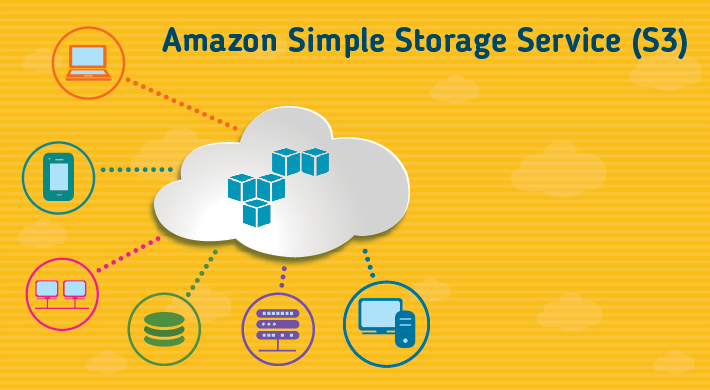Aws well-architected framework checklist lets cloud engineers and architects better understand the advantages and disadvantages of their decisions while building systems on amazon web service (AWS). The framework provides constant feedback on your architectures against best practices.
What is Amazon web service (AWS)?
Amazon web service (AWS) is the world’s largest and widely adopted cloud computing platform. Amazon web service is popular because of its flexibility, as it can get customized to fit clients’ needs.
Amazon web services help its clients by lowering costs, innovate faster and become more agile. And business enterprises, large organizations, the private sector, and government agencies can all benefit from the Amazon web service.
AWS well-architected Framework Checklist
Amazon’s well-architected framework is the core or foundation upon which different software systems can get structured. Amazon’s well-architected framework checklist is also a building block of software systems. It narrates the best architectural practices, designs, and critical concepts for running scenarios on the AWS cloud.
Amazon’s well-architected framework checklist is an amalgamation of five core concepts, often regarded as the five pillars of Amazon’s well-architected framework.
These five pillars of Amazon well-architected framework:
Operational Excellence
The operational excellence pillar provides businesses with value. It gives weight to the business by providing support to the development and running of workload effectively. It also generates insights regarding the operations of the companies. It also constantly improves processes and procedures so that businesses get the best out of it.
Operational excellence has the following best practice area in the cloud:
Prepare
This includes understanding your workload and expected outputs or behaviors. It will be much easier to design and improve the system in this way.
Operate
The process involves measuring your success, done by the achievements of business and customer outcomes. It includes defining metrics and then analyzing them to determine if you are heading in the right direction.
Evolve
To sustain operational excellence, you must continue to learn, improve, and grow. Regularly look for margins of betterment. Always push towards achieving more and improving the systems.
There are five design principles in the cloud for operational excellence:
- Operate code
- Make frequent, small, reversible changes
- Refine operations procedures frequently
- Anticipate failure
- Learn from all operational failures
Security
The Security pillar is part of Amazon’s well-architected framework to protect your data, systems, and assets. The security pillar guards information using risk assessment and mitigation. It helps provide business value by securing them. There are six best practice areas for security in the cloud:
Identity and Access Management
An integral component of security in the cloud system, identity and access management only allow permitted users to use the resource and only intendedly.
Detection
Detective controls alarm potential security threat, risk, or even a security attack.
Infrastructure Protection
It compromises control methodologies. The control methodologies encompass defense-in-depth and regulatory obligations. These are very important to maintain successful operations in the cloud.
Data Protection
Data protection is the complete implementation of strategies to protect your data in every manner. It includes data classification, protection of your data at rest and in transition, recovery, encryption, and protection against data theft and data loss.
Incident Response
Despite implementing and integration every security and data protection scheme, you are not entirely risk-free. There is always a chance where the security and integrity of your system get compromised. In such scenarios, incident response ensures that your team can still operate efficiently.
The five design principles of security in aws are:
- Build a robust identity foundation and define access rules
- Create traceability
- Automate security
- Protect data at rest and in transit
- Prepare for security events
Reliability
The pillar of reliability comprises practices that allow the system to continue its work without disruption and discontinuations. Meaning that the reliability pillar ensures that the system can perform its functions correctly when needed. As the name suggests, this pillar makes the system upon which users can depend. There are four best practice areas for reliability in AWS.
Foundations
Foundational requirements are generic, which means they extend out of a single project. And it must meet needs that influence reliability before initializing the architecture of any system.
Workload Architecture
Workload architecture defines your system. Workload architecture directly affects workload behavior on all the five pillars of Amazon’s well-architected framework.
Change Management
A business must accommodate any kind of change in its environment for reliable operating of the system.
Failure Management
Every system can face errors and failures at some point. A reliable system ensures that it is well aware of failures or mistakes and provides automatic help to ensure maximum availability.
The five design principles of reliability in aws are:
- Automatically recover from failure
- Test recovery procedure
- Scale horizontally to increase aggregate workload availability
- Stop guessing capacity
- Manage change in automation
Performance Efficiency
The performance efficiency pillar ensures that the system’s efficiency gets upheld even if the technology develops or the demand changes. The performance efficiency pillar ensures the utilization of the computing resources to meet the requirements. There are four best practice areas for performance efficiency in the cloud.
Selection
This includes selecting the best solutions for the system, often offering multiple solutions.
Review
Technology is constantly developing at a rapid pace. Machine learning and artificial intelligence (AI) have elevated business to new heights. It must continuously review the workload to ensure the best performance of the system.
Monitoring
Constant monitoring is essential to spot out irregularities and disruptions in the system. It is mandatory to monitor and find out issues before the customers get to know about them. Constant monitoring also increases the workload performance.
Tradeoffs
An optimal approach to performance efficiency is to use tradeoffs in the architecture. Consistency, durability, and space can get traded with time or latency to increase performance.
The five design principles for AWS performance efficiency are:
- Democratize advance technologies
- Go global in minutes
- Use serverless architectures
- Experiment more often
- Consider mechanical sympathy
Cost Optimization
As the name suggests, the cost optimization pillar ensures the system runs to get value at the lowest cost. It aims at minimizing the cost yet maintaining a high-performance system.
There are five best practice areas for cost optimization in the cloud.
Practice Cloud Financial Management
AWS brings a new cloud-based system. In this system, innovation is fast because of shortened approval and infrastructure deployment cycles. The new system encourages the implementation of new financial strategies to lower costs.
Expenditure and User Awareness
There is a massive downfall in the expenditure required to deploy a system on AWS. AWS has eliminated the manual procedure like defining hardware specifications, managing purchase orders, etc. It has saved a lot of time and saved a lot of money.
Cost-Effective Resources
AWS provides cost-effective resource allocation from Amazon EC2 and other services in a way that suits your architectural demands.
Manage Demand and Supply Resources
AWS allows you to allocate demands required by the workload automatically. This ensures unnecessary and wasteful resources. In AWS, you only pay for the services you need, which lowers down the cost.
Optimize Over Time
It is the best strategy to review your architectural decisions. AWS regularly releases additional features and services. Ensure you monitor your system regularly and change if it becomes outdated or a new service suits your architectural demands better.
The five design principles for cloud cost optimization include:
- Implement cloud financial management
- Measure overall efficiency
- Analyze and attribute expenditure
- Adopt a consumption model
- Stop spending money on undifferentiated heavy lifting







